Alu Kurumba Paintings
Alu Kurumbas are wonderful artisans and traditionally take rocks and use them for their canvases to create paintings with natural dyes or pigments. The subjects of these painted artworks are nature,…Tribal Painting
View more

Gujarat’s Warli painting
The Warli paintings constitute a traditional art in Gujarat by the Warli tribes. Their style is quite simple yet highly expressive; their subjects include the usually mundane scenes in life, nature,…
Warli Painting
Warli paintings are painted on the walls within the houses of warli tribe people; on both sides of the door and on the outside walls of the huts. The walls of Warli houses consist of bamboo sticks…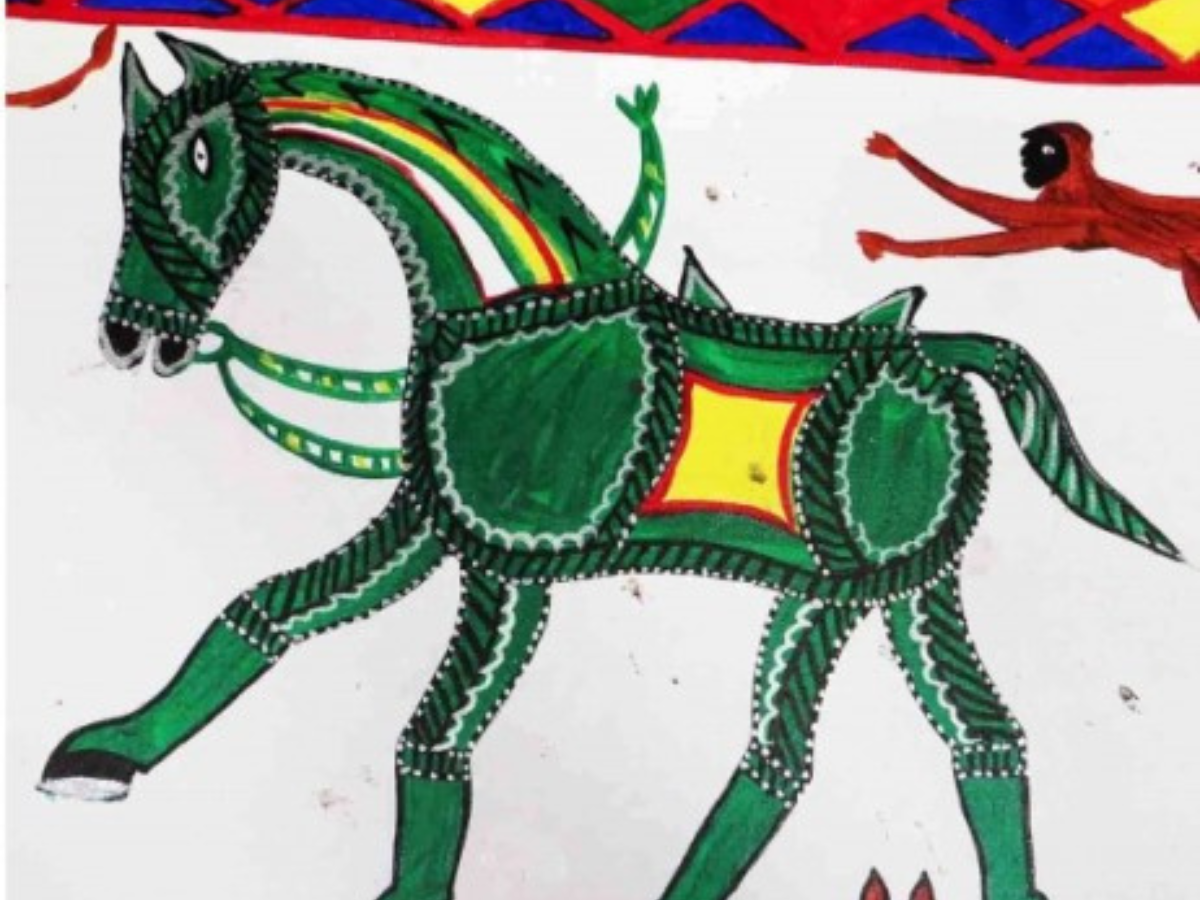
Symbolism in Saval Dharmi Ghoda
The Saval Dharmi Ghoda motif forms an important part of Pithora paintings that are a ritualistic form of art of the Rathwa tribe in Gujarat. These paintings are made as an offering to the deity, to…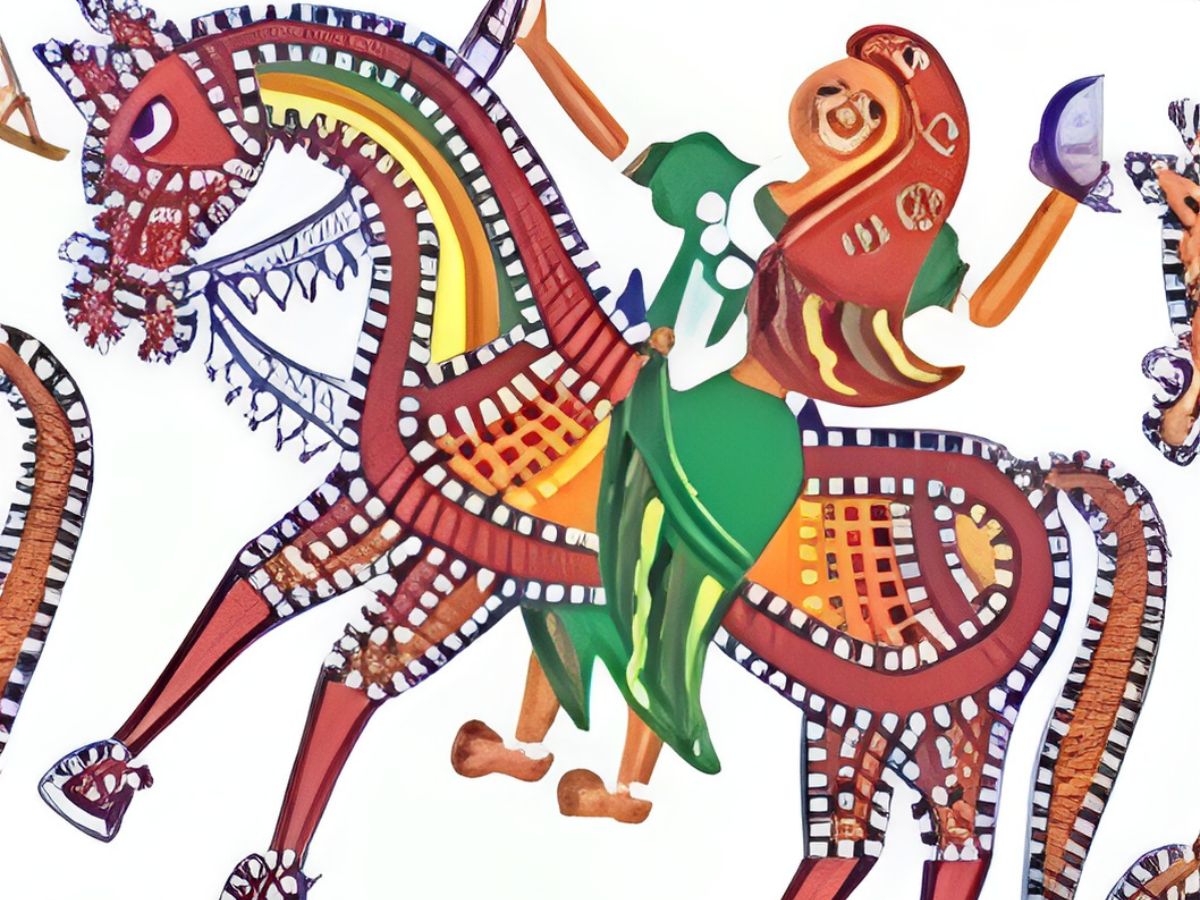
Symbolism in Rani Kajal
Rani Kajal is shown holding a comb for purification and care associated with her role of nurturing and protecting the community. This vision conveys the sense of devotion and maternal love and offers…
Symbolism in Raja Bhoj and his Elephant
The Pithora paintings of the Rathwa tribe are closely knit into the cultural traditions of Gujarat. One of the very important motifs is Raja Bhoj and his Elephant, symbolizing Raja Bhoj's…
Symbolism in Rani Pithora
The art of making the Rani Pithora motifs utilizes especially natural pigments derived from locally available materials like cow dung, lime, and natural dyes. The Rathwa artists, also termed Lakharas…
Symbolism in Lakhari and Jokhari
Lakhari and Jokhari are motifs that represent the cosmic reality of being a guardian and fertility. Lakhari symbolizes the celestial overseer of prosperity, while Jokhari evokes life cycles and the…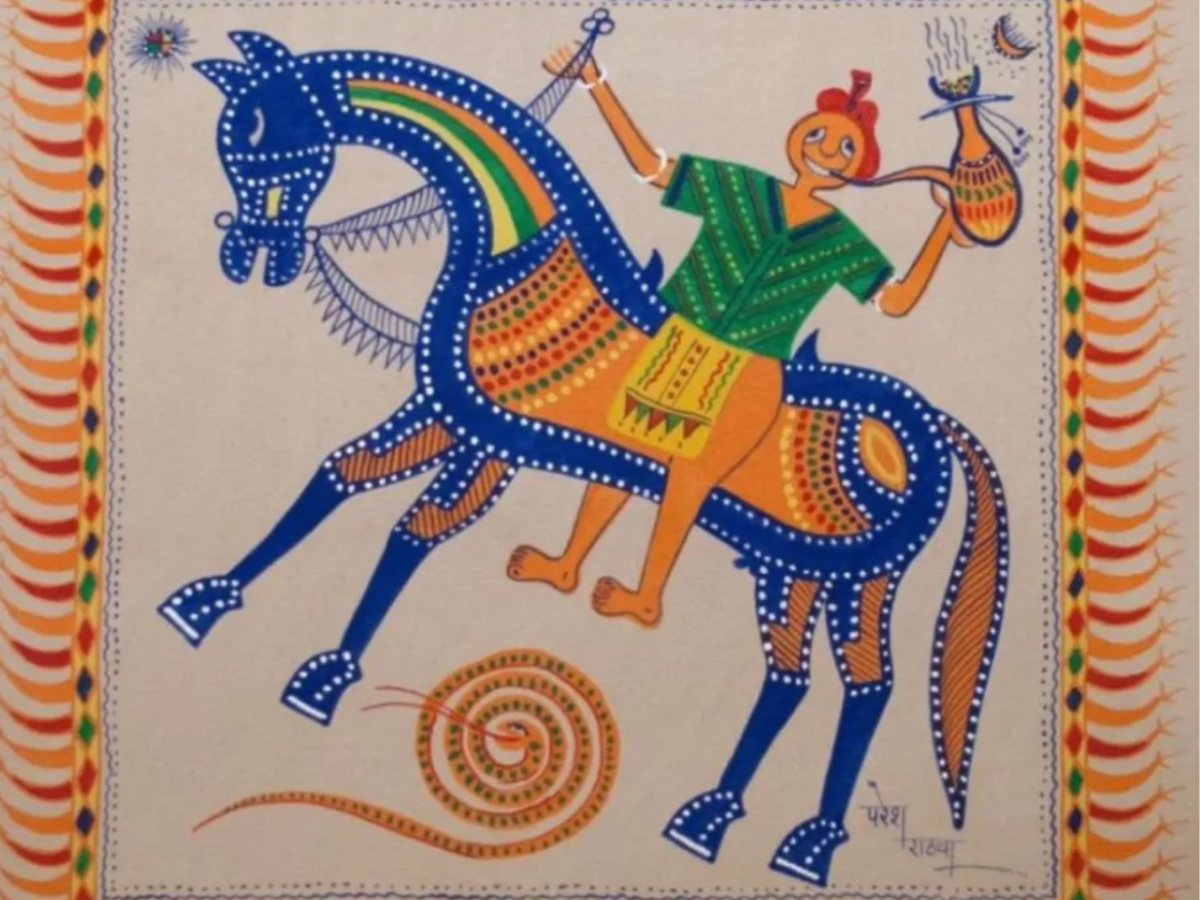
Symbolism in The Baba Ganeh
The Baba Ganeh motif epitomizes wisdom and initiation, one which keeps the past alive. Through its mythology and folklores around Pithora, Baba Ganeh stands for eliminating obstacles, quite like Lord…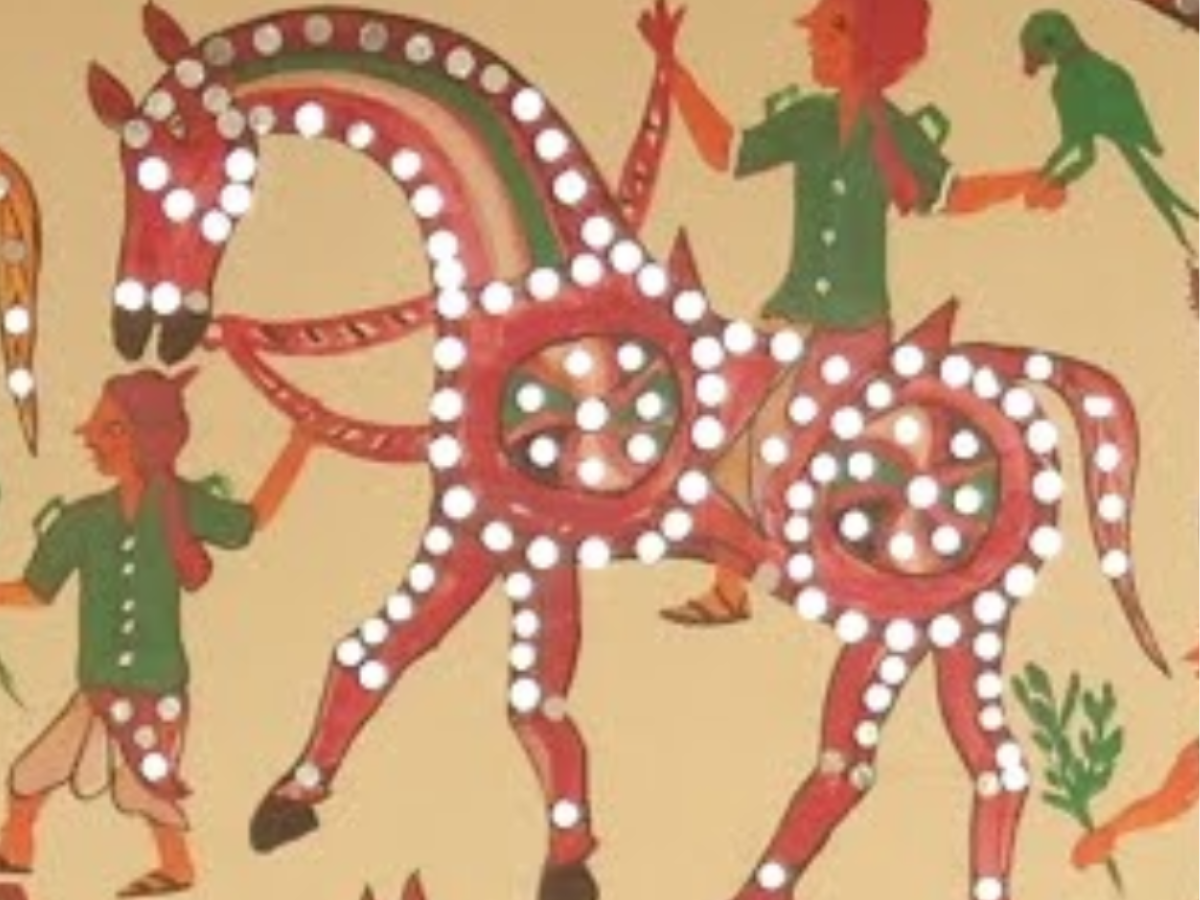
Symbolism in The Baba Ind
Baba Ind is depicted as a symbol of protection and prosperity in Pithora art. His figure often incorporates elements of strength and divinity, representing blessings for crops, livestock, and family…Tribal Dance
View more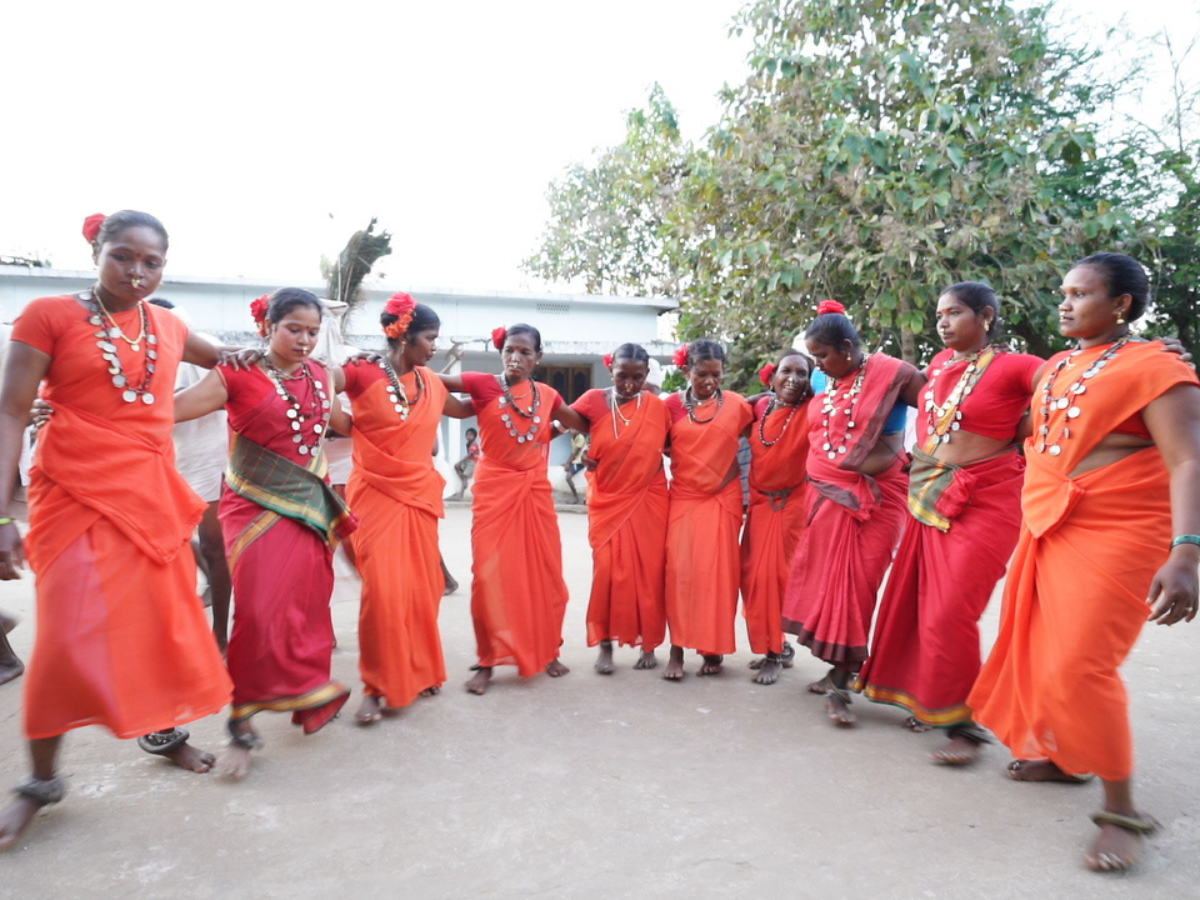
Types of Thongseng
Jumbong Thongseng is a solemn dance performed during the funeral of a deceased man in the Konda Savara tribe. It serves as a ceremonial farewell and a community's collective mourning process. Though less energetic than other Thongseng forms, it reflects the tribe’s deep respect for the departed. Through synchronized steps and soft music, the dance allows emotional release and unity in grief, while also reinforcing beliefs in spiritual continuation and ancestral connection.

MAYURA DANCE
The Mayura dance held by the Kondh Tribe or a Particularly Vulnerable Group (PVTG) because of the peculiarities impressed from their originality as tribal people familiar with so many cultures across India. This is a brilliant expression of their national heritage that unifies the community together. It does not just depict life in motion; rather it tells stories about daily happenings, portraying the essence of beauty and kindness. By preserving this beautiful form of expression, the Kondh provide a link to their traditions, exemplifying the richness of their cultural heritage.

Gaur Singh Dance
The Gaur Singh Dance is an energetic tribal dance of the Muria tribe in Chhattisgarh's Bastar region. Named after the powerful Indian bison (Gaur), it traditionally depicted hunting rituals, showcasing the strength and agility of both the animal and the hunters. Over time, it has evolved into a vital part of the Muria tribe's cultural heritage, integral to their social gatherings and community celebrations.
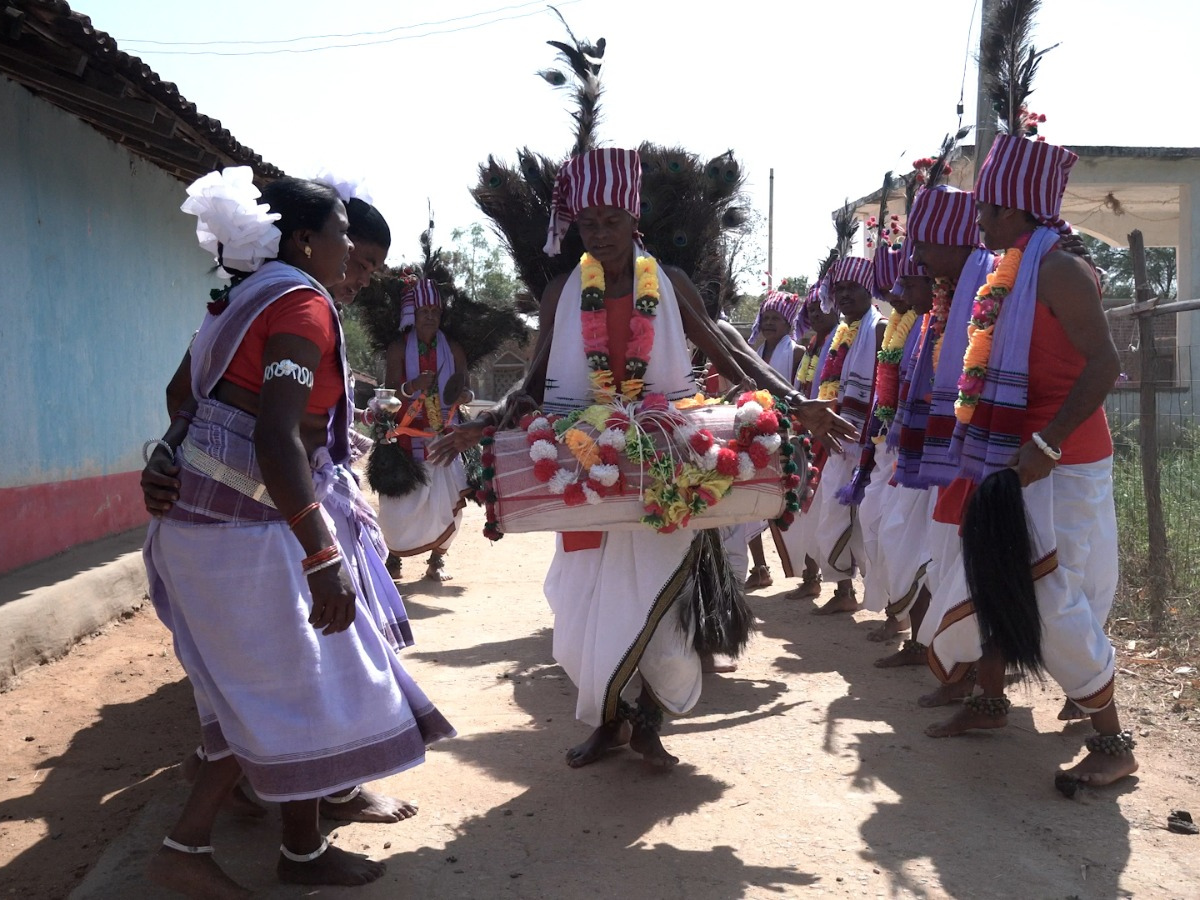
Karma Dance of Oraon Trib
The Karma dance embodies a major cultural traditional event for the oraon community of eastern Chhattisgarh, which is more than an entertainment mode; rather, it embodies an enriched artistic tradition intertwined with their very identity. The unique rhythms played on various traditional instruments and the unique movements characterize the Karma dance as a basic cultural concept for the oraon tribe.
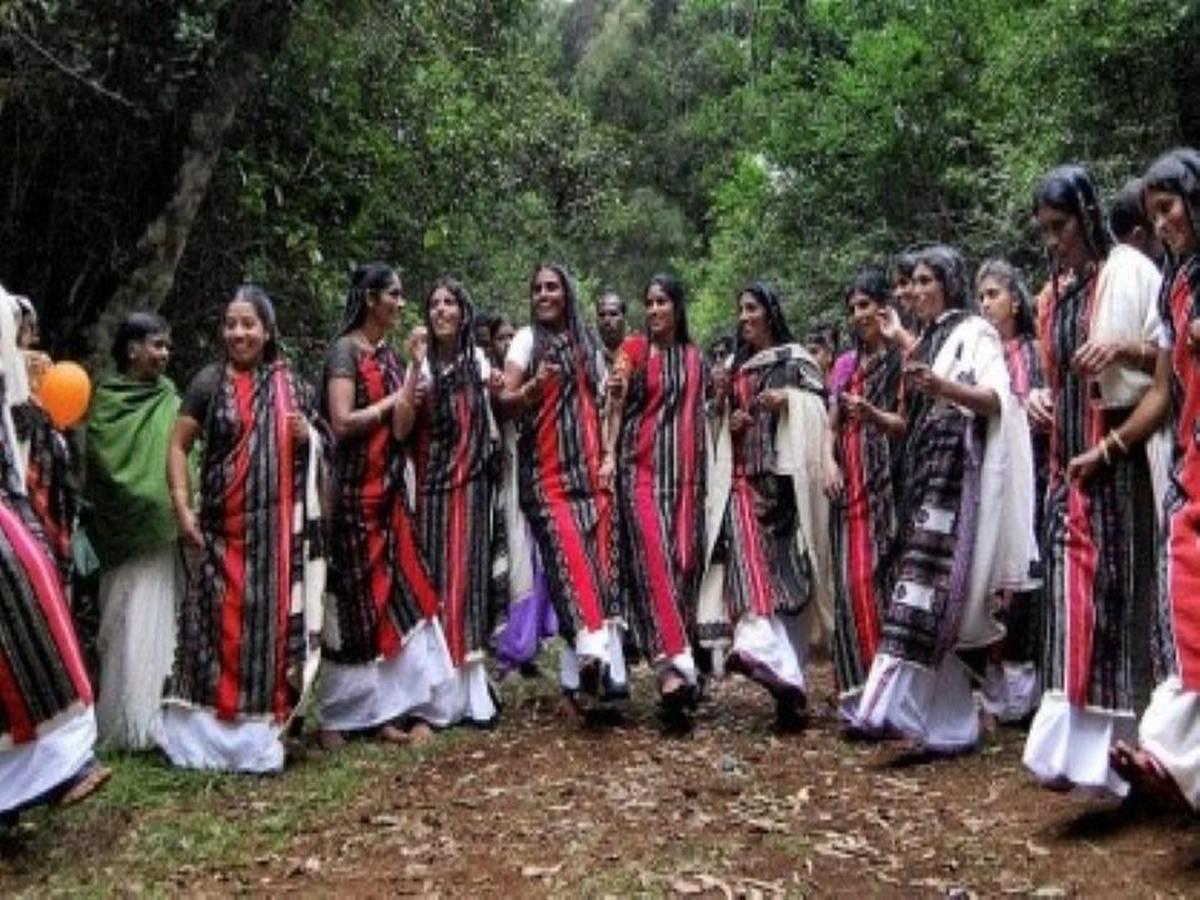
Toda Tribal Dance
Toda dance plays an important role in their culture, always performed in circular formations by males and females alike, and at festivals or important ceremonies. Dances are fluid movements, often representing nature or daily life. Their oral literature, especially their folk songs that are rich in poetic expressions (Emeneau, 1971), continue their oral tradition.

Dance of Irular Tribe
Irulars are known to use unusual musical instruments, which include percussion types such as Pere and Thambate and wind instruments such as Kuvalu and Nagasura. Constructed of materials sourced from forests, these are essential for their festivals, rituals, and cultural manifestations.
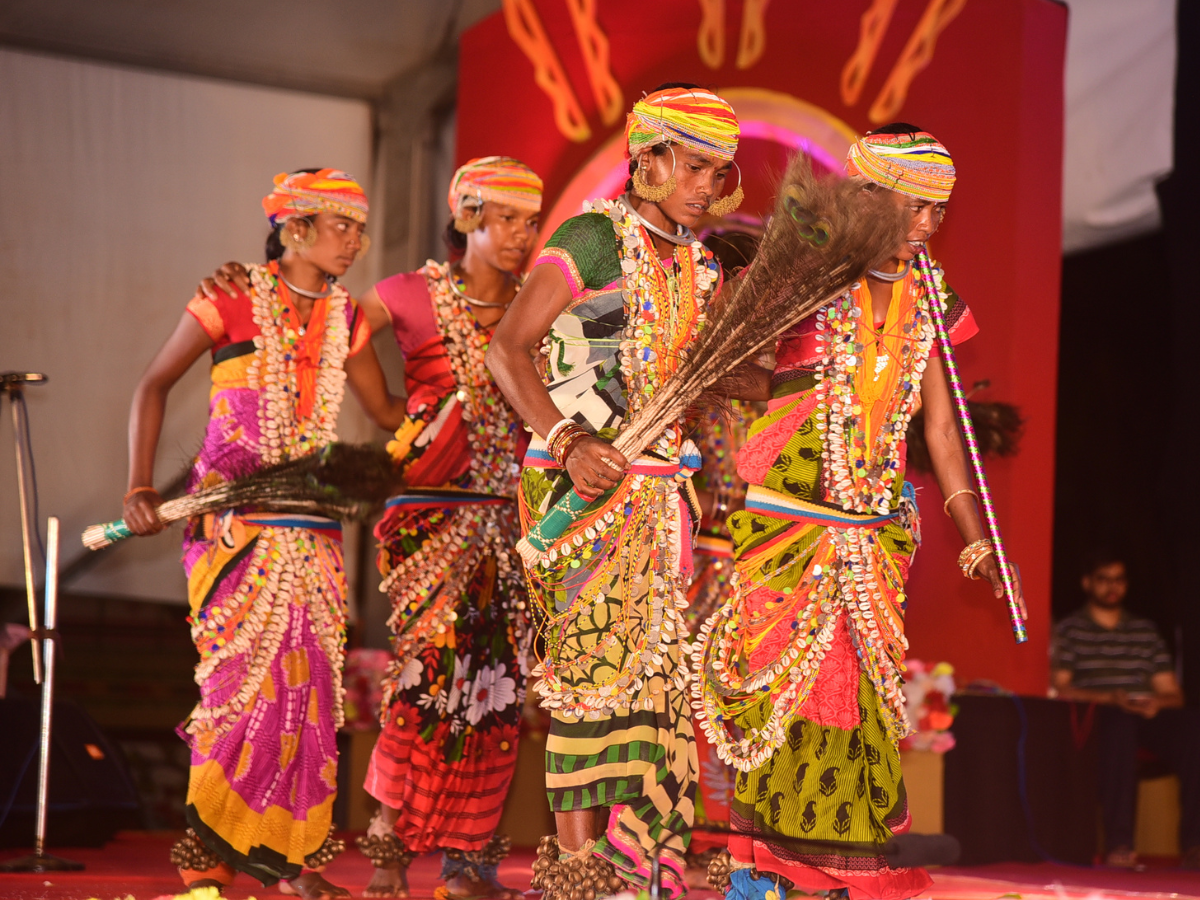
Chaiti Dance
It is an ancient tribal community of odisha called the Bonda people, which lives amidst the rugged landscape of the kondakambru hills, situated within the khirput block of malkangiri district. They say they speak their language remos. Shifting cultivation and horticulture has now been supplemented by small chunks of rice cultivation. Dance means, in their language, "mime". They consider Patakhanda (Royal sword) as Mapru, the ultimate and unquestionable god of the Bonda. They are very fond of celebrating different festivals, and rituals through songs and dance. Among festivals, Chaiti parab is their main festival. Both men and women perform dance combinedly. The female folk don their traditional costumes and adorn colorful arteries of beads, gross other natural and metal objects.
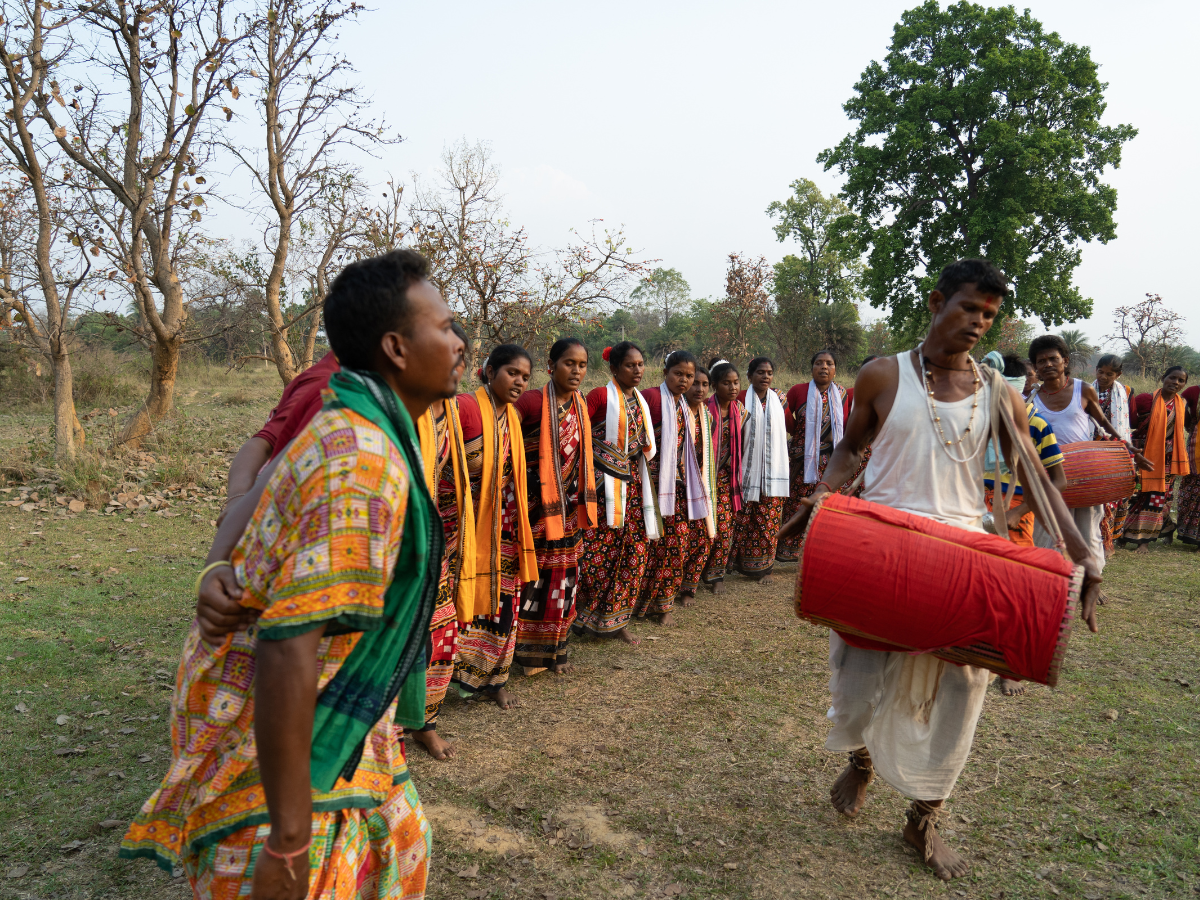
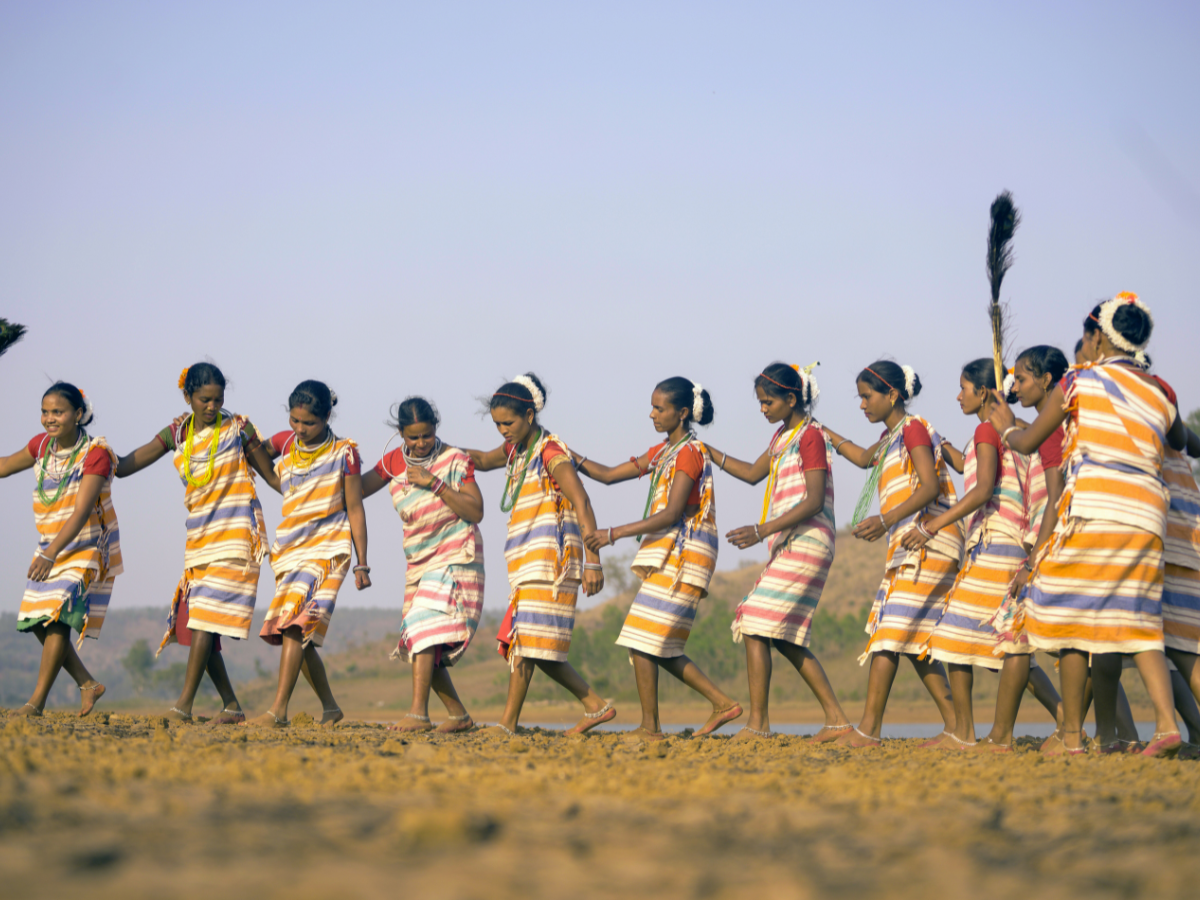
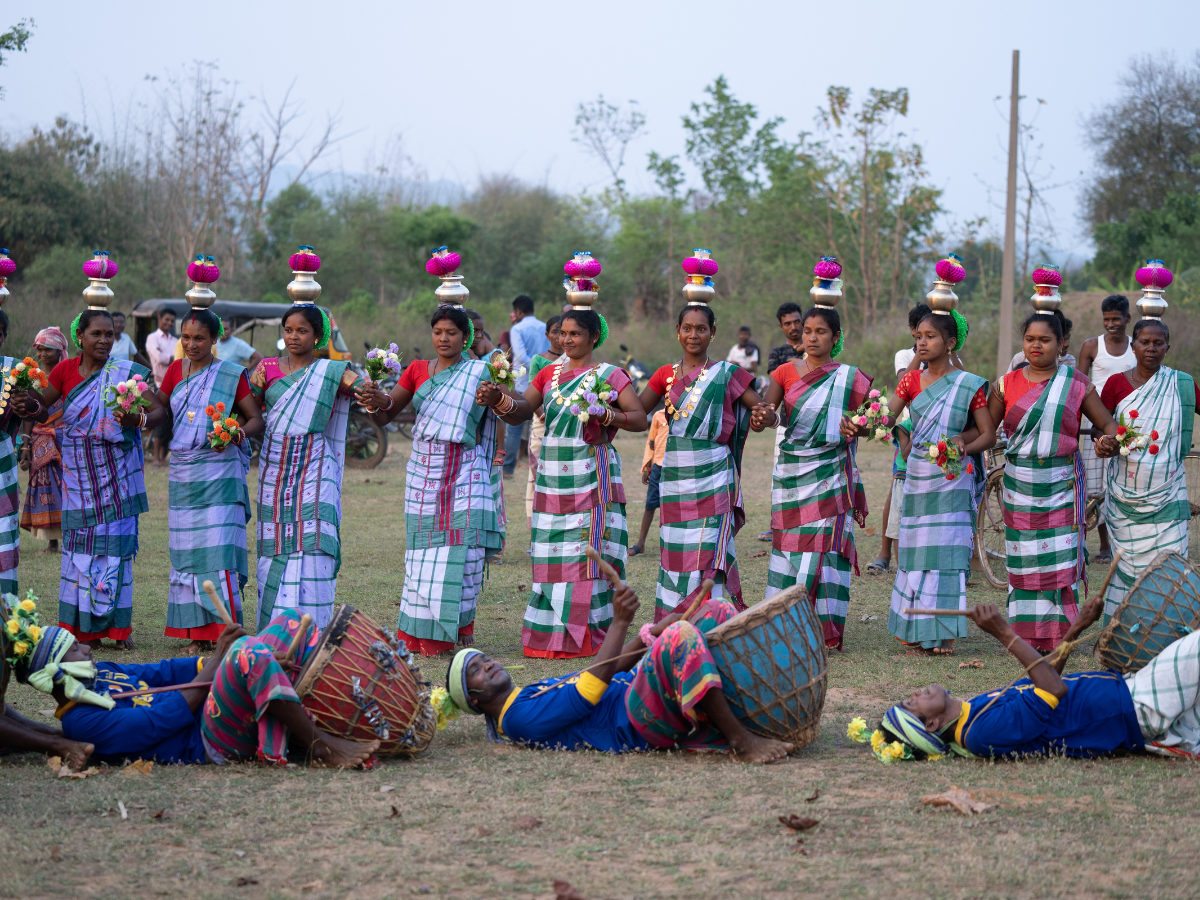
Budigali dance
The Budigali dance is a vivid example of Santal culture in Odisha and is performed with zest during Sakraat festival. To the Santals, dance and music are not entertainment but life-if you want to live, dance, or sing. Every other dance or song is for some unique occasion like Lagre, Danta, and Baha. In Santali, Enec means 'dance' and Serenj means 'song.'
Tribal Artefacts
View moreNaikPod Craft
The Naikpod tribe has a strong tradition of beliefs that has a strong impact on their craft. Their religious practice is centered on gods shown in their craft images, with the chief god being Laxmidevara, representing prosperity and richness. The craftists of the tribe make colorful masks and paintings depicting different deities and mythological creatures, including the Pandavas in the Mahabharata, and they summon these creatures during religious festivals and rituals. In the Laxmidevara Pelli Sambaram, for example, a wedding festival for the goddess Laxmi, Naikpods apply craft to deepen the ritual, showcasing their faith and collective identity.
Bamboo Art
The Baiga tribe residing in the Kabirdham district of Chhattisgarh, bamboo art has been an integral part of their lives since ancient times, permeating their daily routines, social customs, religious practices, economic activities, musical instruments, and means of entertainment.
Biran Mala
The Baiga, being a particularly vulnerable tribal community, mainly inhabit the central region of Chhattisgarh, inclusive of Kabirdham district, and this tribe has a very special traditional ornament: Biran Mala. This garland was handcrafted by Baiga women for decades and has a relevant cultural connotation. It may take about one to two days to prepare one Biran Mala. The Baiga women wear their hair adorned with 10 to 20 of these malas mainly during religious events, dances, and folk songs, and when going to visit relatives.
Kota Tribe Artefacts
This tribe is widely recognized for its craftsmanship, particularly in the area of traditional pottery. Women are primarily involved in pottery making, producing functional and traditional pottery. These potteries are influenced by artist's cultural heritage and are sold locally. These people are also engaged in blacksmithing, carpentry, rope-making, which reflects their artistic skills of the Nilgiri.
Artefacts of Irular Tribe
The Irular demonstrate skilled craftsmanship through their use of bamboo to craft many functional and decorative objects. Some of their sturdy baskets, mats, and home décor pieces are sometimes embellished with traditional patterns reflecting their cultural identity.
Craftmanship of Irular Tribe
The Irular demonstrate skilled craftsmanship through their use of bamboo to craft many functional and decorative objects. Some of their sturdy baskets, mats, and home décor pieces are sometimes embellished with traditional patterns reflecting their cultural identity. These items are made with bamboo sourced from the surrounding forests, emphasizing their in-depth knowledge of locally available natural materials. Baskets are not only a traditional art; they also serve as a means of livelihood especially for Irular women marketing their craft in cooperative societies.
Wooden craft (Wooden Idol)
“ Wooden idols crafted by the Warli, Madia, Bhil, Gond, and Katkari tribes are remarkable artifacts that blend artistic craftsmanship with cultural significance.
Bamboo Craft (Bamboo Tray and Mug)
Warli, Bhil, Gond, Katkari, Thakar, and Kokna tribes' bamboo trays and mugs exemplify their well-established artistic heritage. These exhibits usually depict complex tribal designs, whether woven, incised, or painted with natural dyes. The intricate work testifies to the visual and utilitarian significance of bamboo in native life.
Mundha (Marriage Pillar)
The wooden pillar Mundha is a critical component of wedding rites in the Koraku, Gond, and Madia tribes. It is positioned at the center of the wedding pandal and brought over by the groom himself. The Mundha is inscribed with tribal totems and carries profound cultural and symbolic importance.
Bamboo Craft (Bamboo House)
The Warli and Katkari tribes are known for their bamboo craftsmanship, especially in making bamboo house showpieces. These showpieces reflect their artistic heritage, featuring intricate carvings and woven patterns. Each design symbolizes aspects of tribal life, nature, or spirituality, making them culturally significant and visually appealing.
Tribal Livelihood
View more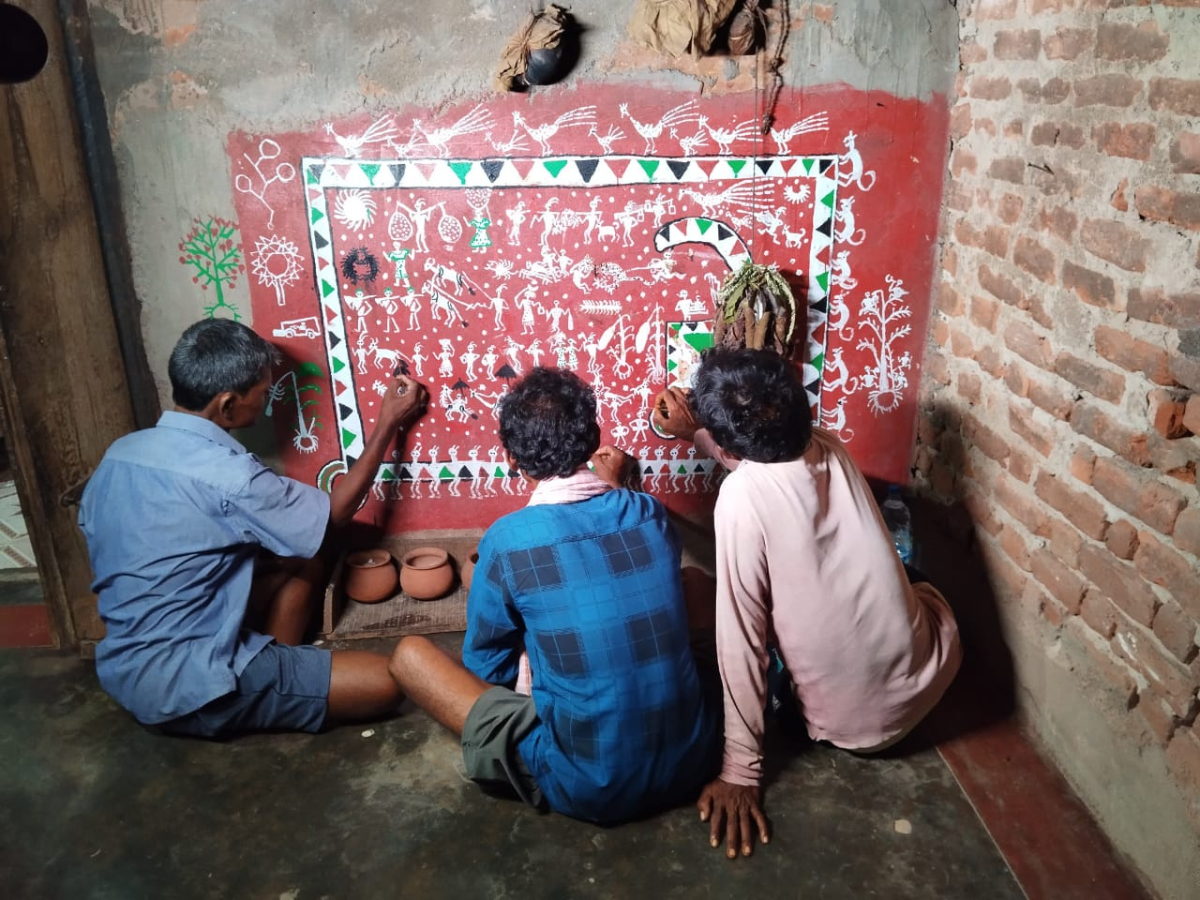
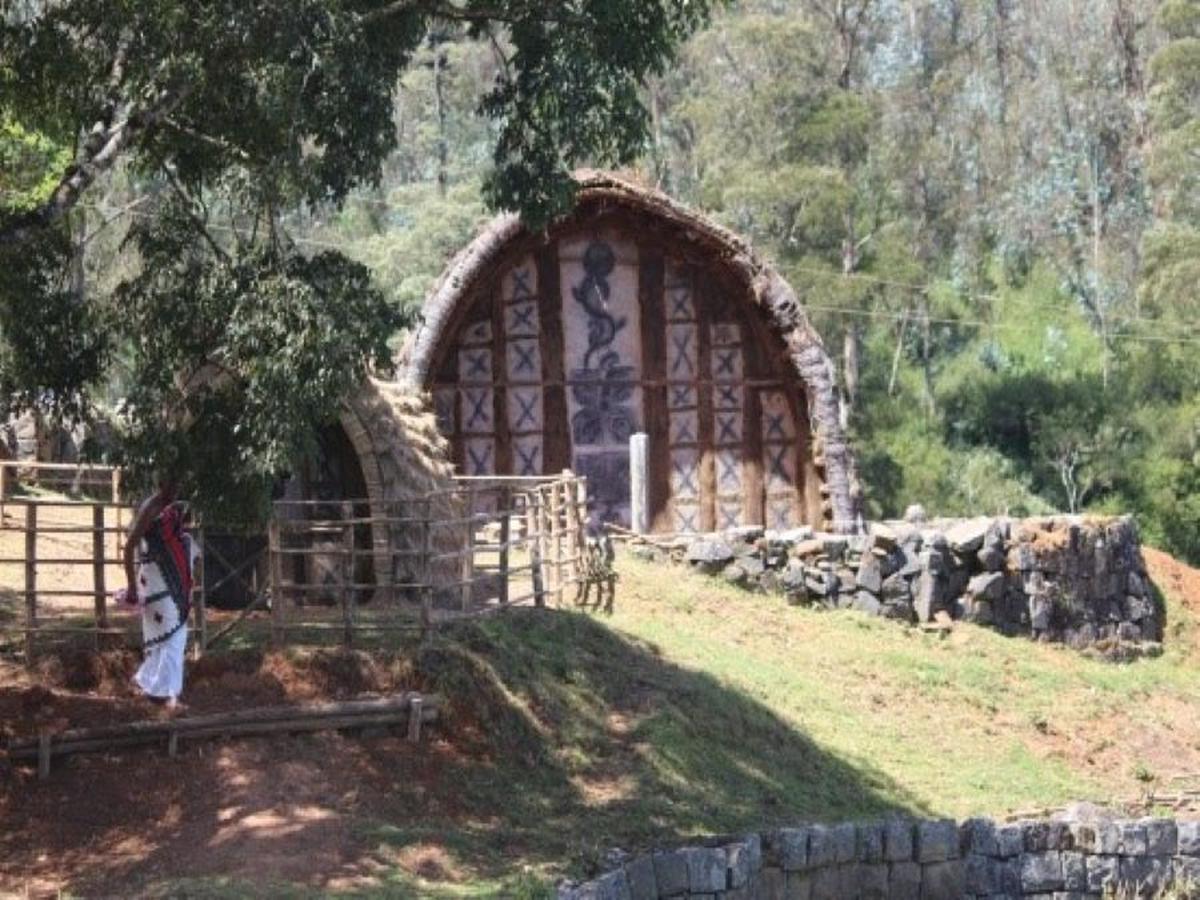
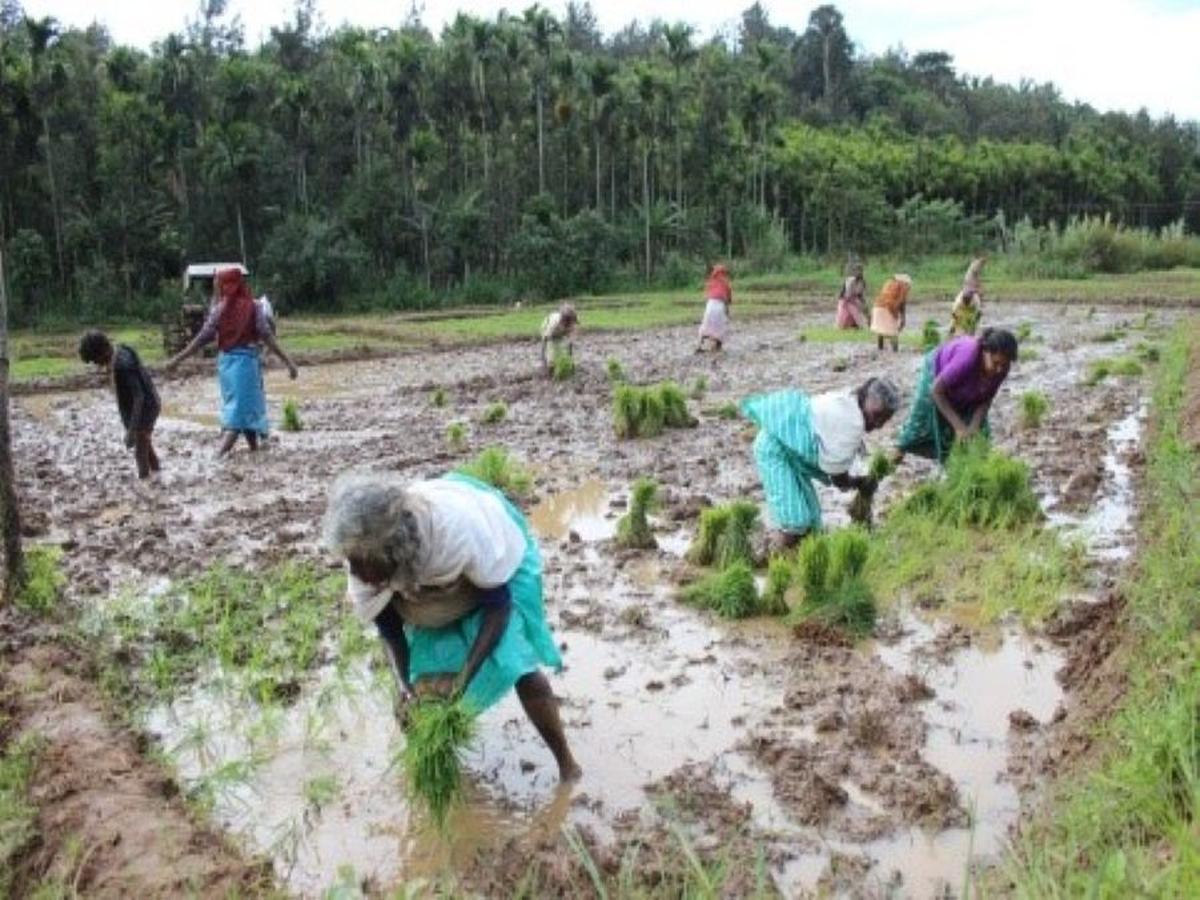
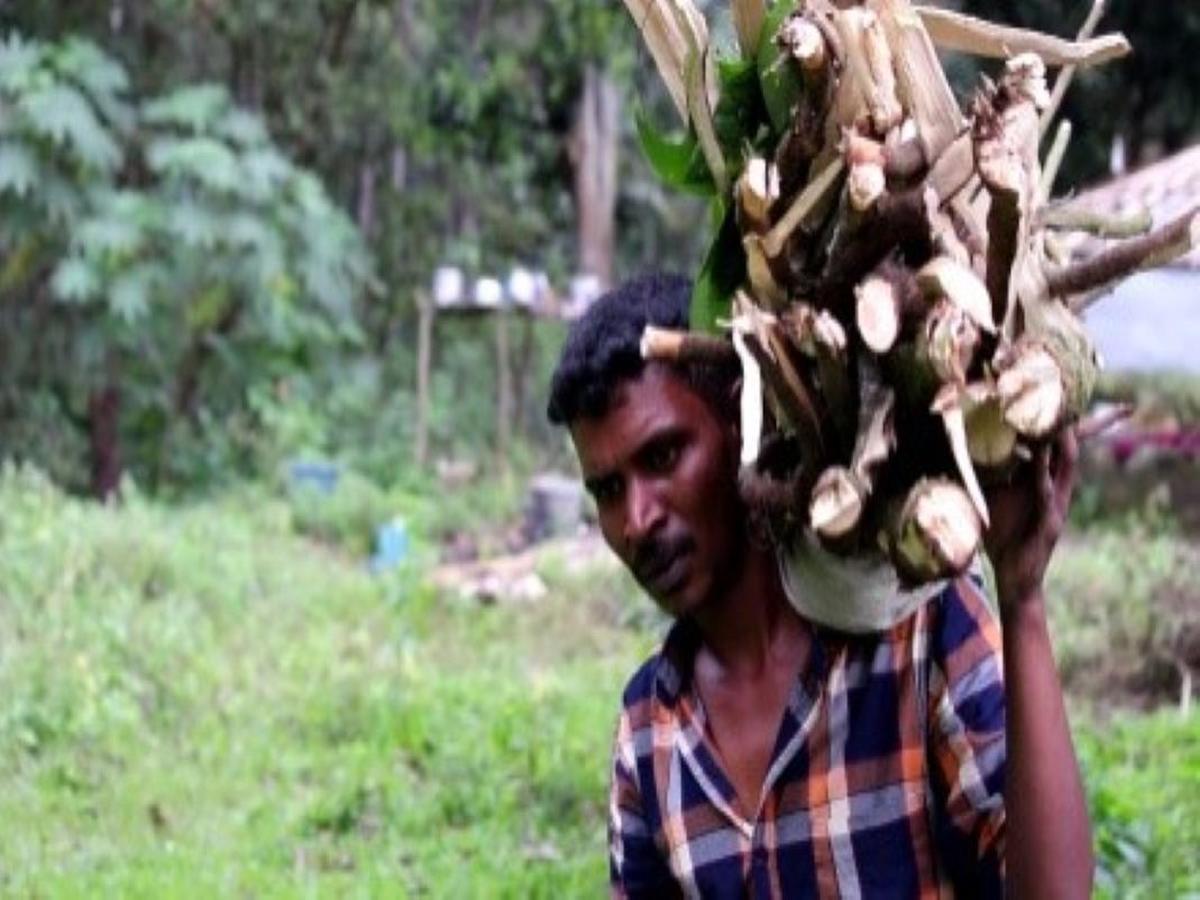
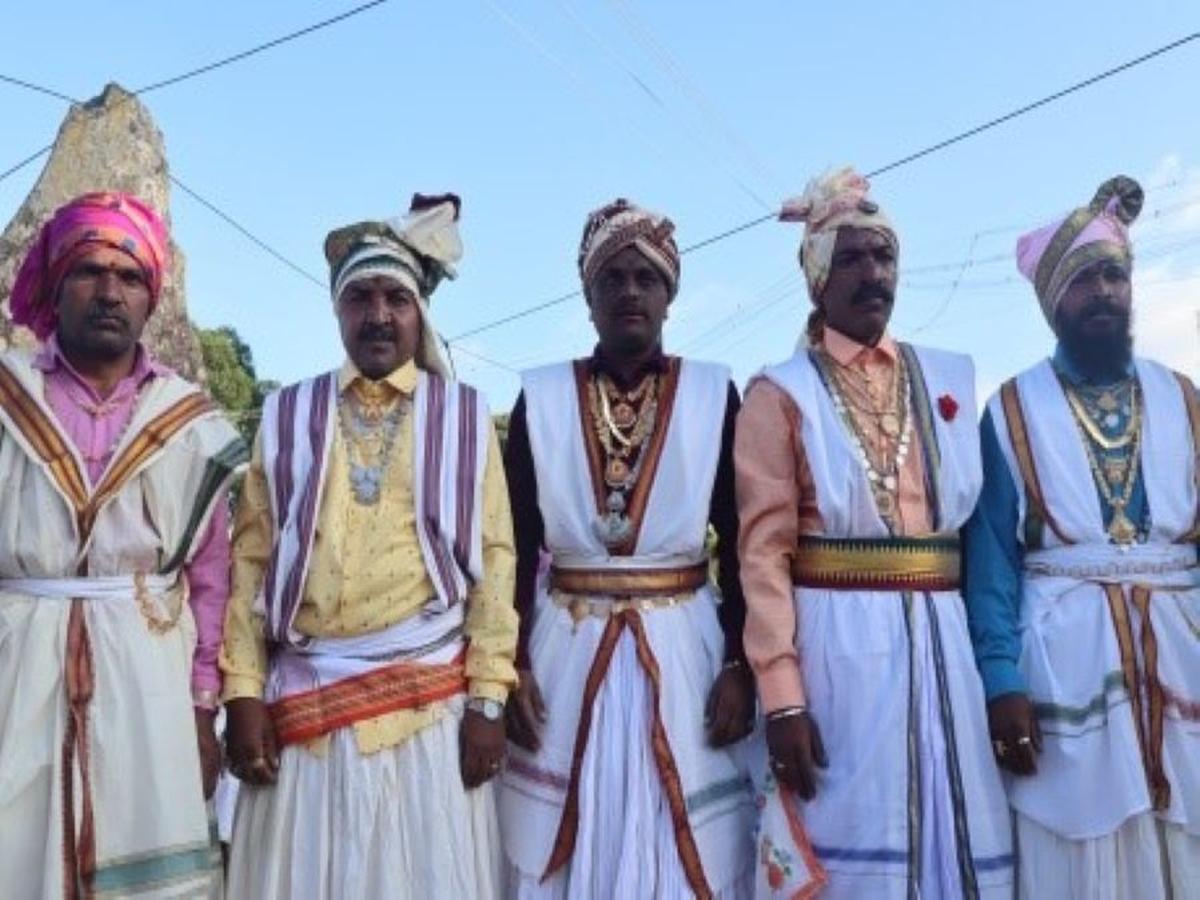
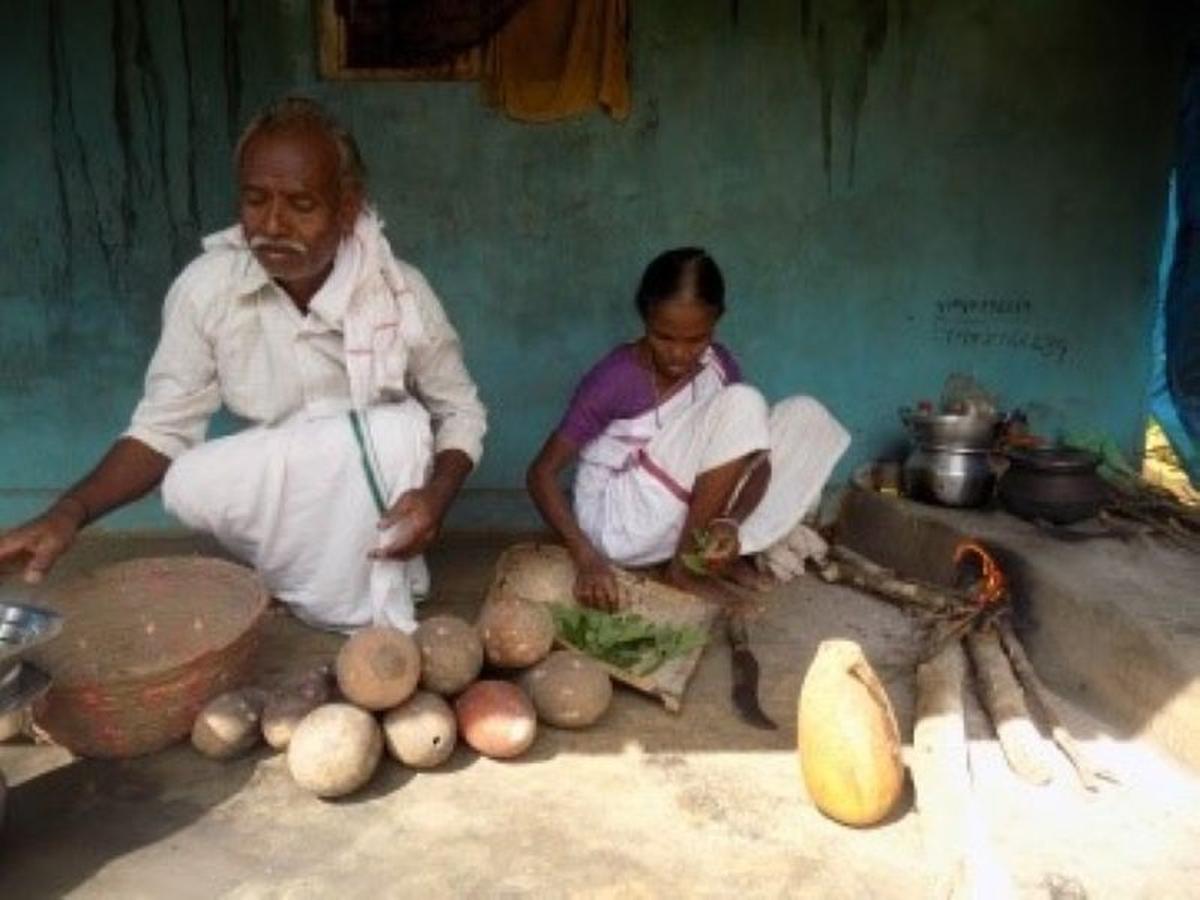
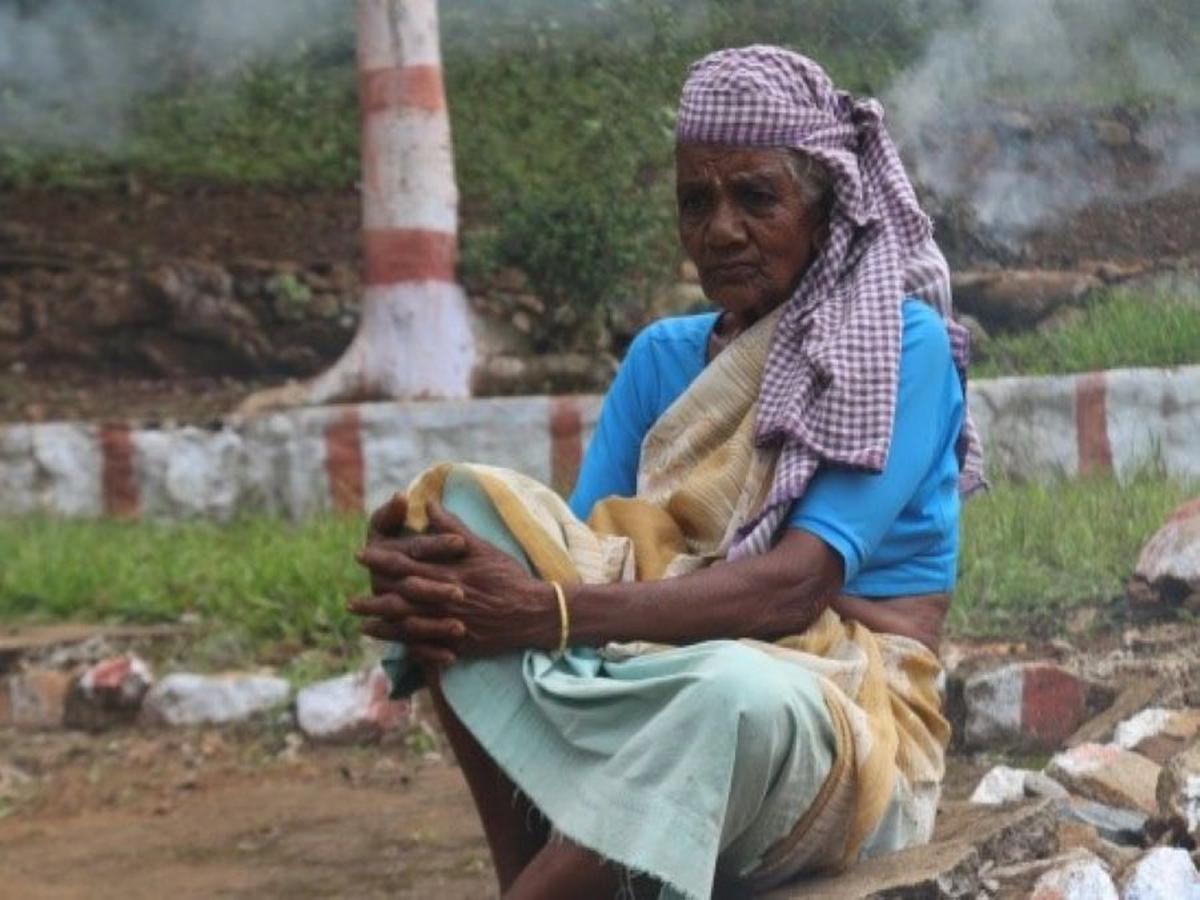
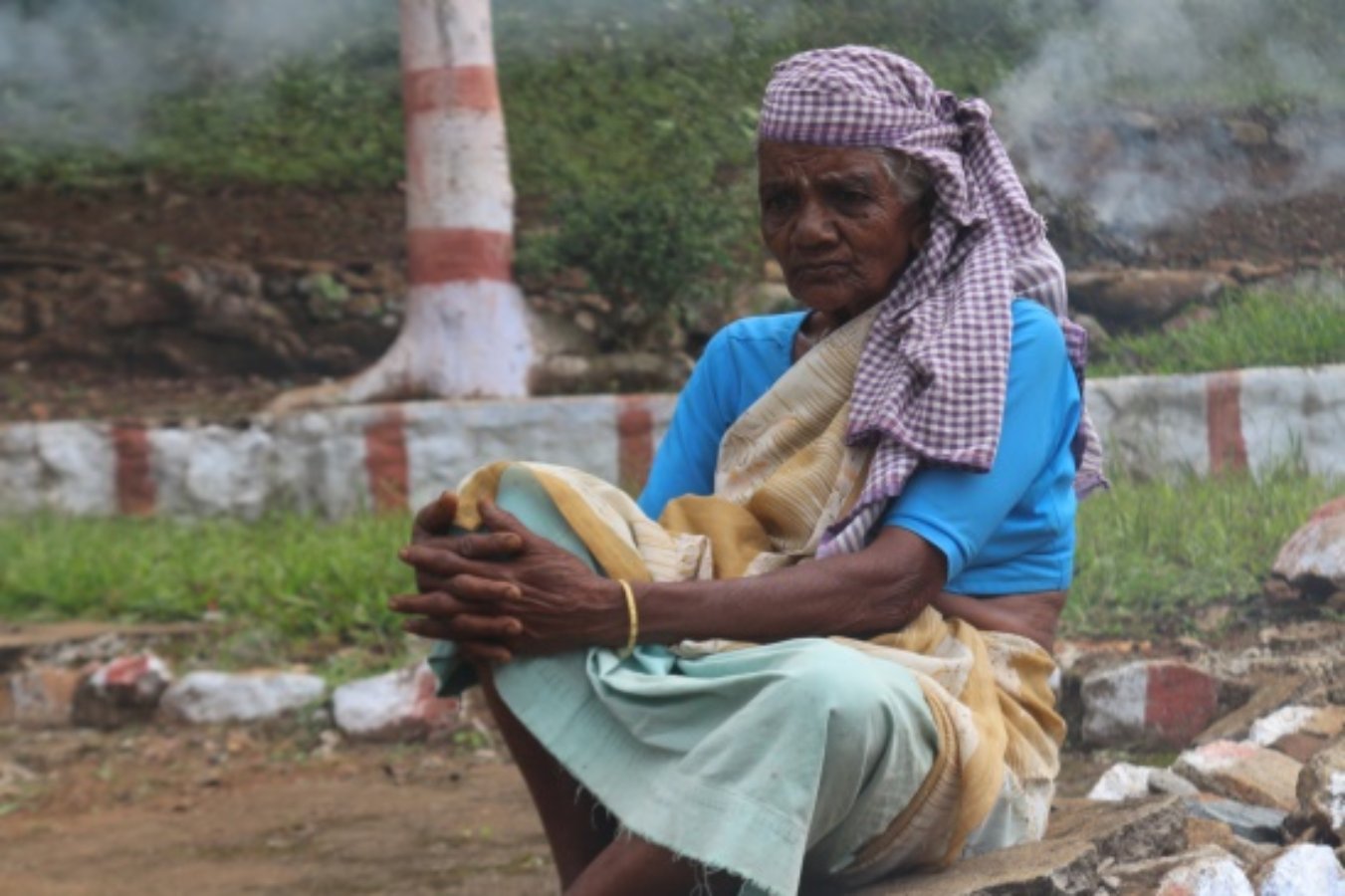
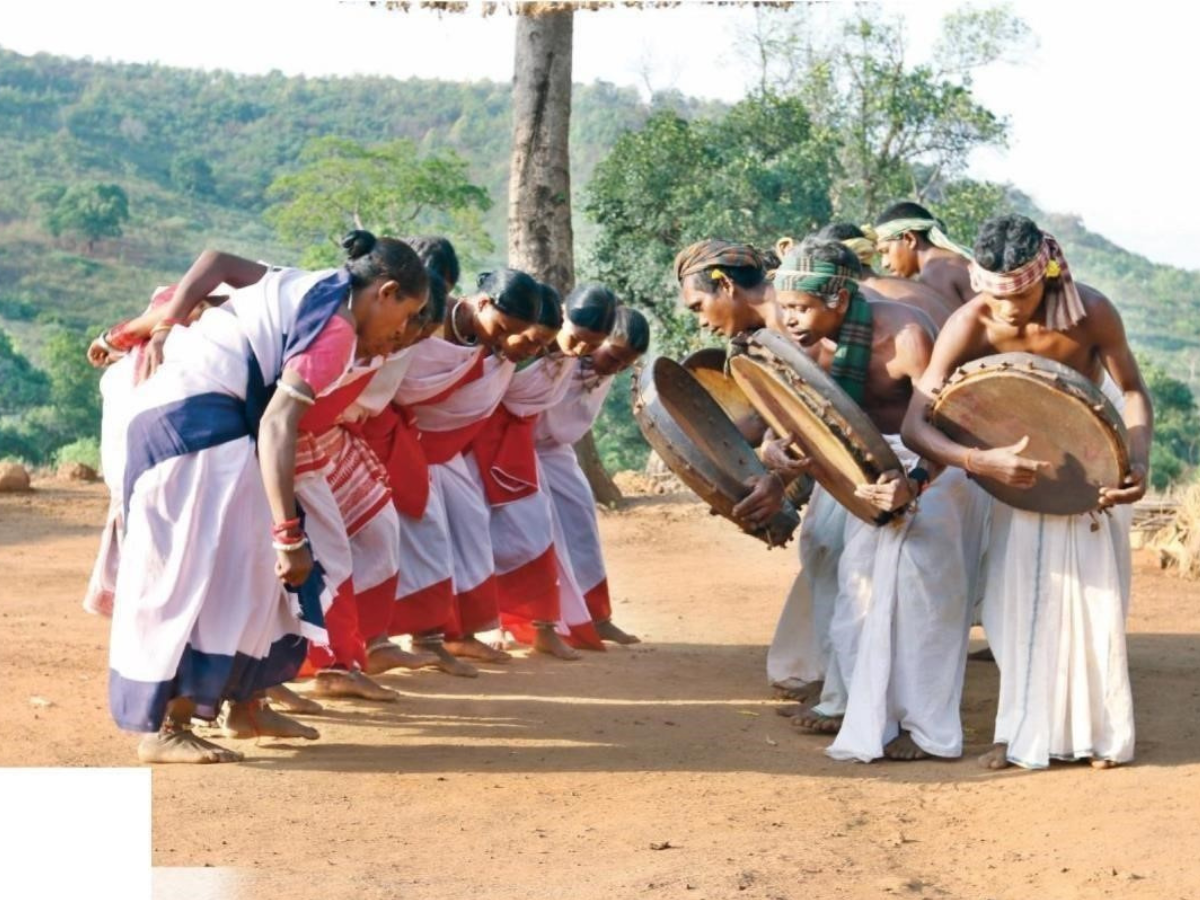
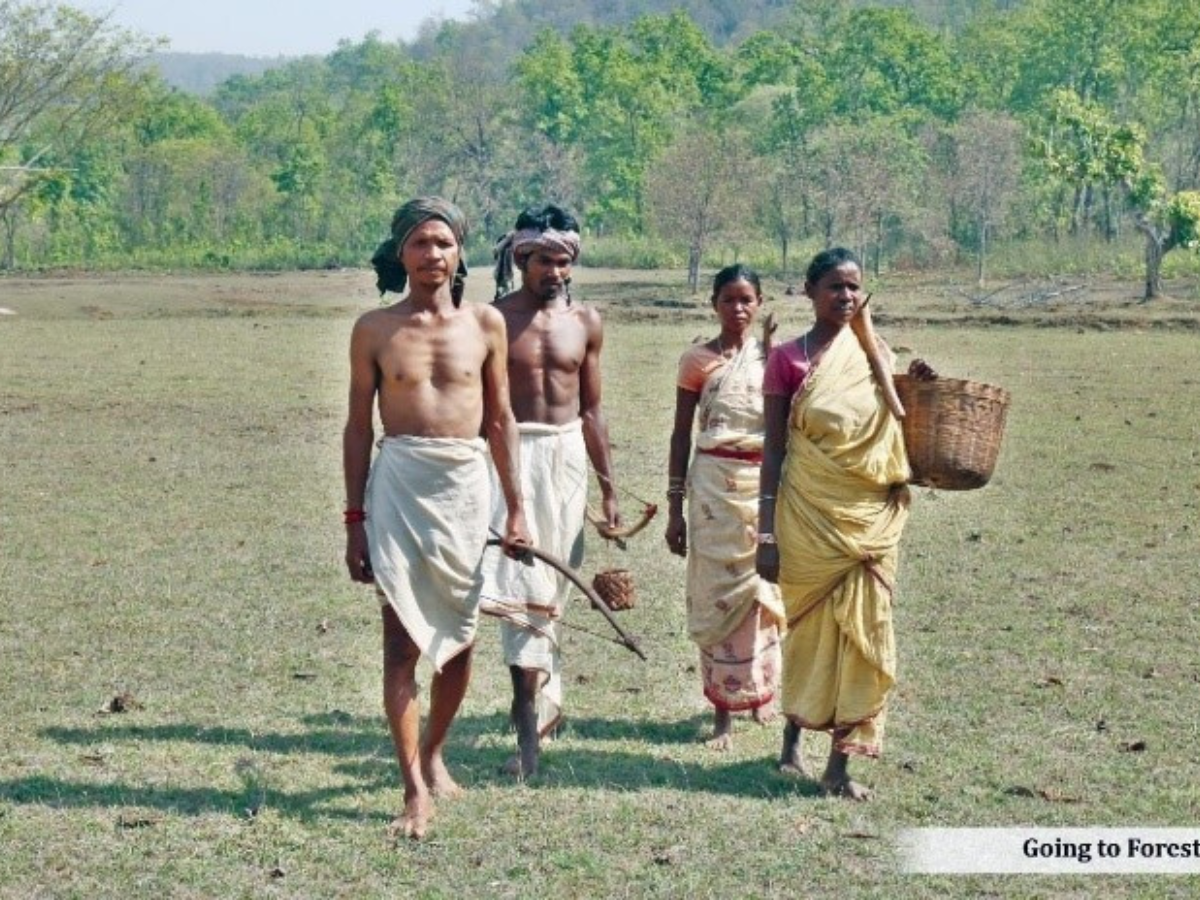
Tribal Clothing & Textiles
View moreToda Textile and Clothing
The embroidery done by Toda tribe is known for its red and black designs on white cloth which is a benchmark of quality craftsmanship. They have a GI certification for Toda Embroidery which they received in 2008. It is created on a range of items such as cushions, mats, key chains, bangles, handbags, table cloths and much more. The time taken to create the embroidery varies from the best part of two months to a week for the smaller purses. There is a counting of threads on a coarsely woven off-white base, then the designs are stitched on the base with embellished techniques. The final finish is very smooth and appealing.
Paniyan Clothing
Each ethnic group of Paniyan has its own costumes, which are somewhat different, but which are traditionally distinctive. Men usually wear the ‘Mundu’ (lower garment). The women wear the ‘Kuppiri’ (upper cloth), separating it into lower and upper garments. Women commonly wear jewelry including palm leaves and seeds 'Kaidha olai' chakka olai, manjadikkuru(Circassian Seed) earrings, and 'Mukku potti' (a decorative nose ring).
Clothing of Kota Tribe
The traditional attire of the Kota people is a representation of simplicity and cultural identity. Traditional men's attire includes an upper garment called ‘Varadu’, and a lower garment called ‘Mundu’. The Mundu can be paired with a dupatti for women. Traditionally they do not wear coloured garments and use white or earthy garments instead. A unique cultural behaviour marks the point of transition for a young woman of the Kota people. At approximately 18–19 years old, she begins tying her hair with a Mandoo leaf. This cultural practice marks the transition point into adulthood and is celebrated with the whole community and continued for the remainder of her life.
Kattunayakan Clothing
Traditionally, a 'kuppigi' is worn by the Kattunayakan community as an upper garment and a 'mundu' is worn as a bottom garment. Both men and women decorate their bodies with symbolic tattoos, many representing cultural beliefs. They attend temple festivals, such as Mariamma, Lambalakottai, and Yermadu, and such rituals offer numerous spiritual opportunities. The community leader is referred to as the 'Karnavar,' which is the elder male member of the community. He plays an important role in the community, such as leading social and religious events, settling disputes, and ensuring continuity through customary practices and ceremonial leader.
Material Used in Thuma (Skirt)
The Thuma is made of cotton, wool, and zari threads, allowing it to be ventilated while comfortable enough for colder weather. It has a glossy finish due to zari threads imparting an indelible character to the garment visually. The mixture can be termed as a traditional skirt that is comforting, durable, and good to the eye, suiting the richness of the place and dexterity of the people.
Adi Tribe’s Attire
The Adis are one of the most populous tribes in Arunachal Pradesh, occupying mostly the temperate and subtropical regions of the state. The tribe has a rich cultural tradition very much in tune with nature, which, in turn, impacts all of their social behaviors and customs and rituals. The tribe thrives on subsistence farming, along with traditional handcrafting, folklore singing, and diverse festivals, all of which contribute to this multi-ethnic repository of Arunachal Pradesh.
Rengma Naga Clothing & Weaving Traditions
Men of Rengma have a traditional accessory in form of a loincloth known as Nzanyan and the other item is a headgear called Pihu. The headgear is decorated with feathers and is used mostly at ceremonies/festivals and dances. Men use a long scarf called Phehong to drape over their shoulders. Although modern clothing is prominent, it is still used during some of the cultural events since it emphasizes Rengma heritage and identity.
Mising Traditional Attire & Weaving
Gadu is a dense, hand-woven shawl that is of considerable cultural significance to the Mising tribe. Mostly, it is used in winters or on occasions like festivals and ceremonies. It is made on the traditional loom with intricate designs. Its basic style consists in natural colors in geometric patterns, with the characteristic signs of Mising weaving techniques. That's why it is a symbol of warmth, hospitality, and social status in Mising society. It is generally exchanged as a gift during weddings and community gatherings, representing the skills passed down through generations.
Traditional textiles of Tiwa Tribe
The Thongali is a traditional belt woven by the Tiwa women. The material is designed mainly black and deep brown on a white background. The border is decorated with geometric motifs, and the body has chevron patterns. The long fringes on the ends add to its beauty, making the Thongali an important tribal accessory.
Rikhousa - Traditional textile of Dimasa Tribe
A Rikhousa bright yellow wrap is traditionally worn by Dimasa women for dances and festivals. The textile features beautiful double bright red borders to go with its vibrancy. This Rikhousa is one of the most important cultural wears, which stand for happiness, tradition, and the rich weaving tradition of the Dimasa tribe.

